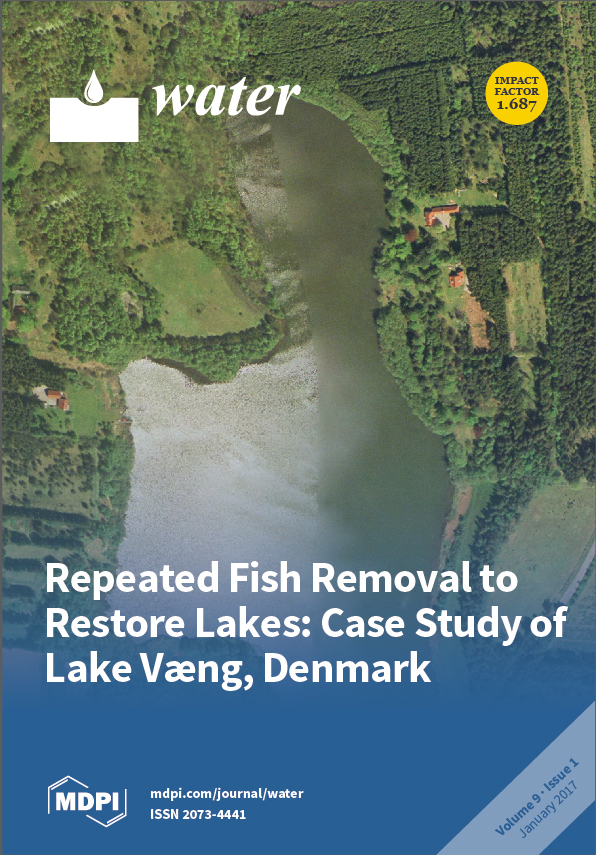Studies suggest that, unlike the situation in temperate lakes, high biomasses of omnivorous fish are maintained in subtropical and tropical lakes when they shift from a turbid phytoplankton-dominated state to a clear water macrophyte-dominated state, and the predation pressure on large-bodied zooplankton therefore
[...] Read more.
Studies suggest that, unlike the situation in temperate lakes, high biomasses of omnivorous fish are maintained in subtropical and tropical lakes when they shift from a turbid phytoplankton-dominated state to a clear water macrophyte-dominated state, and the predation pressure on large-bodied zooplankton therefore remains high. Whether this reflects a higher degree of herbivory in warm lakes than in temperate lakes is debatable. We combined food web studies using stable isotopes with gut content analyses of the most dominant fish species to elucidate similarities and differences in food web structure between a clear water macrophyte-dominated basin (MDB) and a turbid phytoplankton-dominated basin (PDB) of Huizhou West Lake, a shallow tropical Chinese lake. The δ
13C–δ
15N biplot of fish and invertebrates revealed community-wide differences in isotope-based metrics of the food webs between MDB and PDB. The range of consumer δ
15N (NR) was lower in MDB than in PDB, indicating shorter food web length in MDB. The mean nearest neighbor distance (MNND) and standard deviation around MNND (SDNND) were higher in MDB than in PDB, showing a markedly low fish trophic overlap and a more uneven packing of species in niches in MDB than in PDB. The range of fish δ
13C (CR) of consumers was more extensive in MDB than in PDB, indicating a wider feeding range for fish in MDB. Mixing model results showed that macrophytes and associated periphyton constituted a large fraction of basal production sources for the fish in MDB, while particulate organic matter (POM) contributed a large fraction in PDB. In MDB, the diet of the dominant fish species, crucian carp (
Carassius carassius), consisted mainly of vegetal matter (macrophytes and periphyton) and zooplankton, while detritus was the most important food item in PDB. Our results suggest that carbon from macrophytes with associated periphyton may constitute an important food resource for omnivorous fish, and this may strongly affect the feeding niche and the strength of the top-down trophic cascade between fish and zooplankton in the restored, macrophyte-dominated basin of the lake. This dual effect (consumption of macrophytes and zooplankton) may reduce the chances of maintaining the clear water state at the prevailing nutrient levels in the lake, and regular removal of large crucian carp may therefore be needed to maintain a healthy ecosystem state.
Full article





